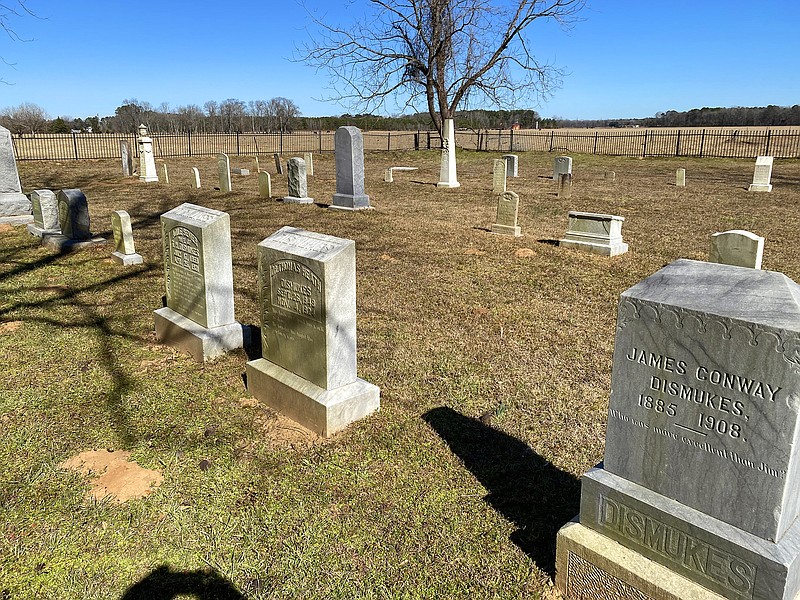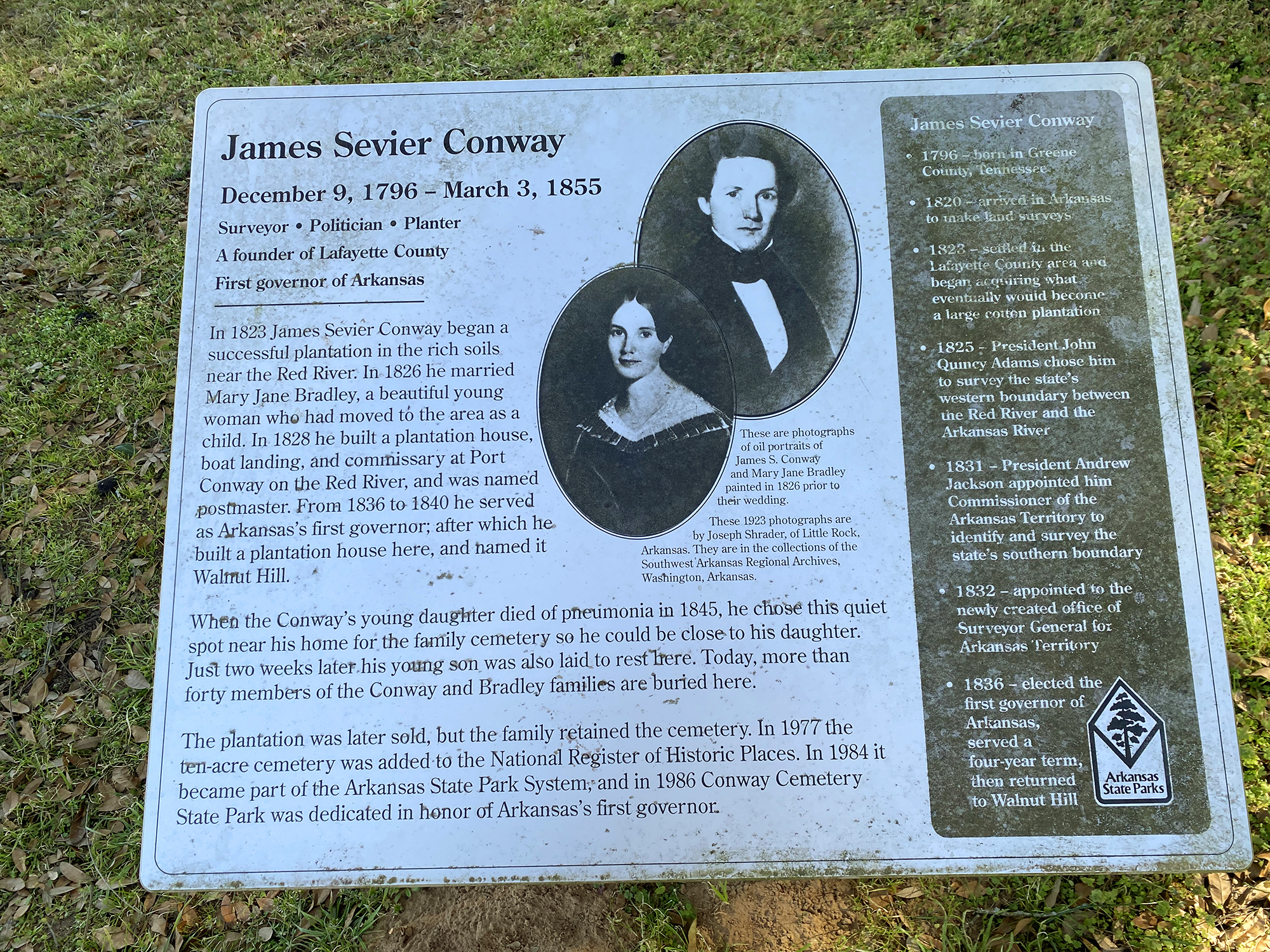Outdoor writer and photographer Corbet Deary is featured regularly in The Sentinel-Record. Today, Deary takes readers on a journey to Conway Cemetery State Park.
Arkansas is no different from any other state in the sense that there are regions that are simply more intriguing than others. In turn, these sections of the state draw far more visitors than do those that have little to offer.
We're fortunate to have worlds of outdoor opportunities in the midst of the Ouachitas. And the Ozarks are equally as bountiful, if not more so, with potential destinations for those who would rather spend their time kicking around in a beautiful natural setting.
Video not playing? Click here https://www.youtube.com/embed/XJD0vxdQ0D8
There is more than enough to keep one occupied in the northeast section of Arkansas, and the southeast has its fair share to offer as well. I've happened upon plenty of outdoor destinations situated in south-central Arkansas, too.
Well, that leaves us with the southwestern portion of the state. And I'll have to admit that few potential destinations await in this particular region, in comparison to other sections of the state.
That in mind, I decided to cover yet a couple more potential destinations from the southwest corner of Arkansas to go with the article that I covered last week. In fact, these locations are all hardly 30 minutes, or so, apart.
Having most recently covered a beautiful reservoir and campground in Miller County, I chose a destination for this week's article that is rich in history.
I would suspect that the Conway Cemetery is one of smallest, if not the smallest, state park of all 52 situated between the borders of Arkansas. However, don't let its size, or lack thereof, deter a visit.
I found this little plot of land very interesting upon learning of its rich history. In fact, the first governor of Arkansas and his family were laid to rest at this very spot.
It all began in early December of 1796, when Thomas and Anne Conway gave birth to a son in Greene County, Tennessee. The proud parents certainly were not in financial dire by the era's standards, as they had a productive farm, growing cotton and corn, and raising cattle.
James' parents, and their nine children, struck out in the direction of St. Louis Missouri in 1818, where James learned to survey under the supervision of his uncle, Rector, who was the surveyor general for Illinois, Missouri and Arkansas.
Conway, evidently, had a knack for the occupation, as he was appointed as a federal land surveyor in 1820. The young man was given the responsibility of surveying the territory of Arkansas' western boundary with the Choctaw Nations and the southern boundary with Louisiana.
Conway failed to follow instructions to the tee, and in turn, "sparked a dispute with the Choctaw leaders" when he added 100,000 unwarranted acres to Arkansas. The issue was eventually resolved in 1886, though, when the tribe was compensated 50 cents per acre for the lost property.
Conway was married to Mary Jane Bradley, from the Red River area in 1826. Although the couple had 10 children, only five lived beyond infancy and early childhood.
Evidently, Conway's previous occupational boo-boo was forgiven, as he was named the surveyor general of Arkansas Territory in 1832. He then began purchasing land alongside the Red River, in Lafayette County. In fact, he owned an excess of 2,000 acres by the mid-1830s.
As his wealth grew, Conway eventually built a larger house in close proximity from his original dwelling and named his plantation Walnut Hill.
One might think that he would be content with the plantation, but not so. In fact, he entered the political realm in 1828 and was elected to represent Lafayette and Union counties in the territory legislature in 1831.
James Conway secured the Democrat Party's nomination for governor with the support of several prominent politicians, including the presidential administration of Andrew Jackson, in June of 1836.
The plantation owner likely had many dreams when his family moved away from Greene County, Tennessee, 40 years prior. But little did he know that he would be elected as Arkansas' first governor, by a vote of 5,338 to 3,222.
Conway's tenure as the state's leader had its shares of ups and downs. The state's institutional structure, including the prison system and an expanded network of public roads, came to fruition during his tenure.
He and other state leaders also recognized the need for Arkansas to charter an institution that would furnish money and credit, and would serve as depository for state funds. In turn, the establishment of a state bank and a real estate bank were two of the initial actions of the general assembly, both of which were also the first for the new governor to sign into law.
Now for the controversy that came along with the position. Reports suggested that Native Americans were gathering on the state's western border and were planning to attack local settlements.
Although the governor accomplished much, his tenure was dampened due to bad health. In fact, he considered resignation during the summer of 1838 as a result of serious illness. And in lieu of seeking reelection for a second term, Conway chose to devote the remainder of his life to farming and local affairs.
James Sevier Conway died of pneumonia on March 3, 1855, and was buried with loved ones that had went on before him at the family cemetery at Walnut Hill.
Those visiting the 11.5-acre, Conway Historic Cemetery State Park will find themselves in the midst of the one-half-acre cemetery where the former governor was laid to rest.
According to information posted in the brochure, published by the Arkansas State Parks, "The cemetery lies just south of the site of the governor's former plantation home -- Walnut Hill."
I have visited this particular destination several times throughout the years. And although the facility is rather small in comparison to our other state parks, I always find myself occupied and glad I chose stop by.
Of course, I am most intrigued at the final resting place of the first governor of this great state. But I am equally as interested in reading the names and dates on the headstones of the family members sharing the property, and the stories that they could have told.
In fact, I suspect the inquisitive side of me will beckon yet another visit to the Conway Cemetery Historic State Park upon my next excursion into the southwestern part of the state.
To get to the park from Hot Springs, head south on Highway 7 (Central Avenue) for approximately 26 miles and turn right to merge onto Interstate 30 west, toward Texarkana, at Caddo Valley.
Remain on I-30 for 46 miles and take Exit 31 onto Highway 29 toward Hope. Go three-tenths of a mile and take a left onto North Hazel Street, toward Hope. Go three-tenths more miles and turn left onto Bill Clinton Drive. Travel 3.1 miles and continue onto Bill Clinton Drive.
Travel 23 miles and turn left onto West Sixth Street. Go 350 feet and take a right on North Maple Street. Drive 19 miles and turn right onto East Fourth Street. Travel 2.3 miles and turn left on County Road 9. Go four tenths of a mile, take a left and travel 80 feet to the destination.

